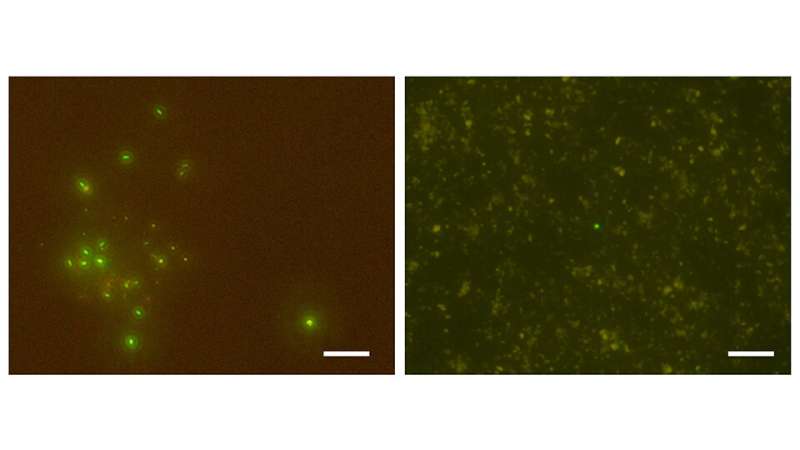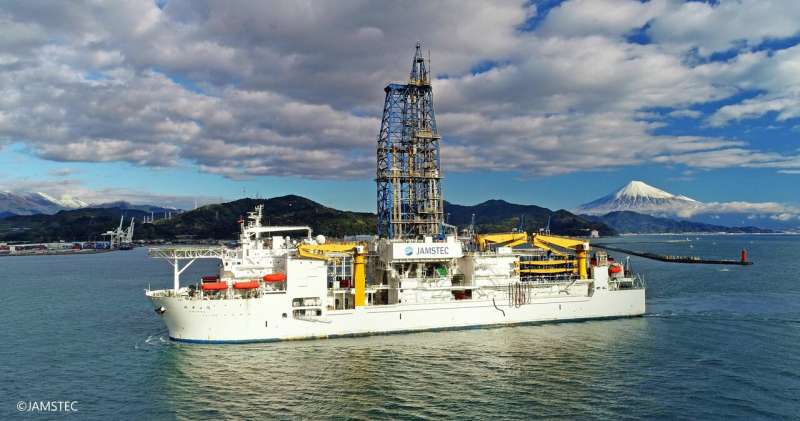How hot is too hot for life deep below the ocean floor?

At what depth beneath the seabed does it become so hot that microbial life is no longer possible? This question is the focus of a close scientific cooperative effort between the Japan Agency for Marine-Earth Science and Technology (JAMSTEC) and MARUM—Center for Marine Environmental Sciences at the University of Bremen. An expedition by the drilling program IODP (International Ocean Discovery Program) in 2016 has provided new insights into the temperature limits of life beneath the ocean floor. The findings have now been published by the international team in the professional journal Science.
The sediments that lie deep below the ocean floor present a very harsh habitat. Temperature and pressure steadily increase with depth, while the energy supply becomes increasingly scarce. It has only been known for about 30 years that, in spite of these conditions, microorganisms do inhabit the seabed at depths of several kilometers. The deep biosphere is still not well understood, and this brings up fundamental questions: Where are the limits of life, and what factors determine them? Ambient temperature could well be an important factor. Thermophilic (heat-loving) microorganisms can exist quite comfortably at temperatures of up to 80 degrees Celsius.
Furthermore, there are hyperthermophilic bacteria and archaea that thrive at even higher temperatures, but require a high energy supply to maintain their cells. Under ideal laboratory conditions these can withstand temperatures as high as 122 degrees Celsius for a short amount of time. But to study how high temperatures affect life in the low-energy deep biosphere over the long-term, extensive deep-sea drilling is necessary. "Only a few scientific drilling sites have yet reached depths where temperatures in the sediments are greater than 30 degrees Celsius," explains the leader of the study, Prof. Kai-Uwe Hinrichs of MARUM. "The goal of the T-Limit Expedition, therefore, was to drill a thousand-meter deep hole into sediments with a temperature of up to 120 degrees Celsius—and we succeeded."
Worldwide unique drilling location
Like the search for life in outer space, determining the limits of life on the Earth is fraught with great technological challenges. Temperatures of 120 degrees Celsius are normally encountered at about 4,000 meters below the sea floor. There is only one way in the world for scientists to obtain samples from such great depths—with the Deep-sea Scientific Drilling Vessel Chikyu. To facilitate the drilling in this instance, a location in the Nankai Trough off the coast of Japan was selected. The sampling site lies in a water depth of 4.8 kilometers, but because of the steeper-than-average geothermal gradient here, it was possible to reach a temperature of 120 degrees Celsius in a hole only 1,180 meters deep. "Surprisingly, the microbial population density collapsed at a temperature of only about 45 degrees," says co-chief scientist Dr. Fumio Inagaki of JAMSTEC. "It is fascinating—in the high-temperature ocean floor there are broad depth intervals that are almost lifeless. But then we were able to detect cells and microbial activity again in deeper, even hotter zones—up to a temperature of 120 degrees."
While the concentration of vegetative cells decreases sharply to a level of less than 100 cells per cubic centimeter of sediment at over 50 degrees Celsius, the concentration of endospores increases rapidly and reaches a peak at 85 degrees Celsius. Endospores are dormant cells of certain types of bacteria that can reactivate and switch to a live state whenever conditions are favorable again. "Some specialist types are able to adapt to these severe conditions and persist over geological time spans in a sort of deep sleep," continues Inagaki.

Improved detection methods
Much of the research for this project was carried out at the very fringes of technical feasibility. "Within the past twenty years many techniques for the detection of life have been improved, so that some are now as much as a hundred thousand times more sensitive," explains co-chief scientist Dr. Yuki Morono of JAMSTEC. In order to reliably detect the sparsely occurring microbial life in the 50-degree Celsius sediments, it is crucial to prevent contamination. Therefore, the processing of samples was monitored using strict contamination controls, and for particularly critical work the samples were transported by helicopter to the cleanroom laboratories at the IODP core repository in Kochi, Japan. "Achieving the goals of the expedition would not have been possible without carrying out some aspects of the research on land with high quality of research environment control," according to Morono, who led the onshore research efforts during the expedition.
International cooperation
"The findings of our expedition are surprising. They show that at the lower boundary of the biosphere lethal limits coexist with opportunities for survival. We didn't expect that," says co-chief scientist Dr. Verena Heuer of MARUM. "And this new understanding would not have been possible without the strong interdisciplinary team and its dedicated spirit of cooperation." 43 authors from 29 different institutes, representing nine countries, worked together on the recently published article. The study was carried out as a part of the work of Expedition 370 of the International Ocean Discovery Program, IODP. Investigation of the deep biosphere is a main research theme of IODP. "With every expedition, advances are made in technical and analytical methods; researchers with diverse backgrounds and new ideas come together each time in order to answer a scientific question," continues Heuer. "And that is fascinating. Every new hole opens a window to new knowledge."
More information: "Temperature limits to deep subseafloor life in the Nankai Trough subduction zone" Science (2020). science.sciencemag.org/lookup/ … 1126/science.abd7934
Journal information: Science
Provided by University of Bremen





















